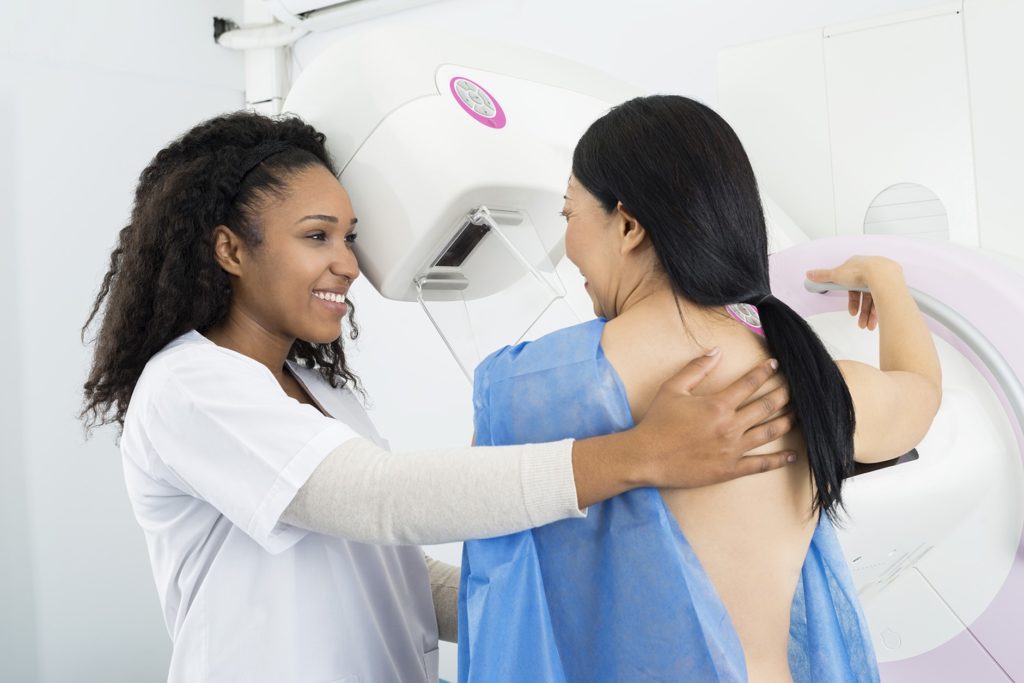
A mammogram is an X-ray image of the breasts and doctors use it to detect cancer even before external symptoms begin to show.
October is National Breast Cancer Awareness Month and the 15th of October marks National Mammography Day. Every year, women are encouraged to raise awareness about breast cancer and take life-saving actions to fight this deadly disease. These commemorative days serve as a reminder that early detection is the best way to fight breast cancer.
As per the CDC, cancer is the second leading cause of death in the United States. They also report that among women, breast cancer is the most common form of cancer diagnosed. The early detection process involves screening and breast exams. Breast exams should be scheduled frequently and if any abnormalities are noticed, a mammogram can be recommended by your doctor.
How Does Mammography Work?
Mammography exams use low-dose X-rays to examine the breast tissue. These exams can point out abnormalities that may not be cancer but can help decide if further tests are required. For a mammogram, you will be asked to stand in front of a special X-ray machine. Your breast will be placed on a plastic plate by a technologist. From above, another plate will firmly squeeze your breast. The plates flatten the breast and keep it steady while the X-ray is taken. You may feel some pressure. To make a side view of the breast, the same process will be repeated. In the same way, the other breast will be X-rayed. (CDC, 2020)
Mammograms and Early Detection of Cancer
The most significant techniques for preventing breast cancer fatalities are early detection and state-of-the-art cancer therapy. Breast cancer that is detected early, when it is tiny and has not spread, is more treatable. The most reliable strategy to detect breast cancer early is to have frequent screening examinations. There are different guidelines provided by the American Cancer Society for women with average or high risk of breast cancer.
If a woman does not have a personal history of breast cancer, a strong family history of breast cancer, or a genetic mutation known to increase breast cancer risk (such as in the BRCA gene), and has not had chest radiation therapy before the age of 30, is considered to be at average risk for screening purposes. In such cases, the recommendations for screening are as follows –
- Women between the ages of 40 and 44 can begin screening with a mammography once a year.
- Mammograms should be done every year for women aged 45 to 54.
- Women over 55 can choose to have a mammogram every other year or continue to have yearly mammograms. Screening should be continued for as long as a woman is in excellent health and expects to survive for at least another 10 years. (American Cancer Society)
3D Mammography
Digital breast tomosynthesis or three-dimensional [3D] mammography is a newer type of mammogram that has become much more widespread in recent years. According to numerous studies, 3D mammography appears to reduce the likelihood of being called back for more testing. It also appears to detect more breast cancers, according to multiple studies, and it has been demonstrated to be beneficial in women with dense breasts. A study is currently underway to better compare the difference in the outcomes of 3D and regular (2D) mammograms. (American Cancer Society)
To make sure that women all over the world are aware about breast cancer and get regular breast exams, it is up to us as individuals to be educated and aware, urging the women in our lives, especially the ones at high risk, to take necessary steps. At a minimum, regular self-examinations should be done. Early detection can save lives. This National Breast Cancer Awareness Month, schedule a mammogram for yourself and learn more about breast cancer and early detection.
Works Cited
“What Is a Mammogram?” Centers for Disease Control and Prevention, Centers for Disease Control and Prevention, 14 Sept. 2020, www.cdc.gov/cancer/breast/basic_info/mammograms.htm.
“ACS Breast Cancer Early Detection Recommendations.” American Cancer Society, www.cancer.org/cancer/breast-cancer/screening-tests-and-early-detection/american-cancer-society-recommendations-for-the-early-detection-of-breast-cancer.html.
“NATIONAL Mammography Day – Third Friday in October.” National Day Calendar, 16 Oct. 2019, nationaldaycalendar.com/national-mammography-day-third-friday-in-october/.
